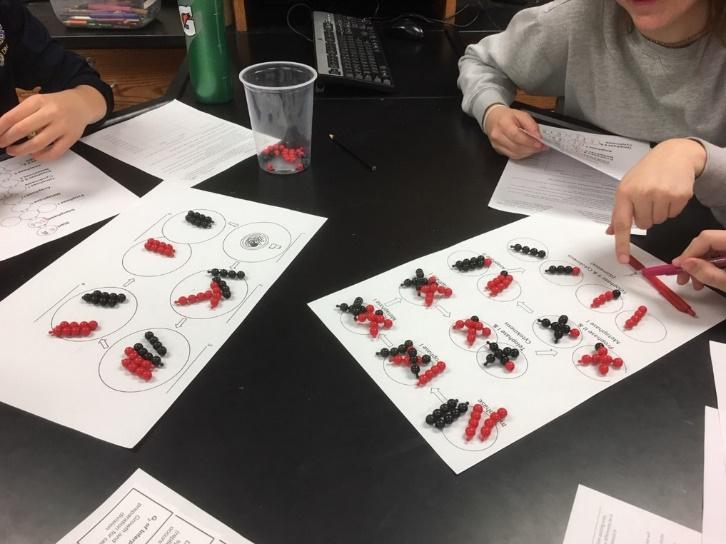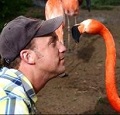Next Gen Navigator
Implementing Storylines: A Meaningful, Effective Way to Practice the NGSS
By Jason Crean
Posted on 2020-03-24
Why is a shift needed?
The science instructional shifts outlined in A Framework for K–12 Science Education and embodied in the Next Generation Science Standards (NGSS) are bigger than a classroom, a school, a district, or even your state. It’s a national imperative to ensure our students will be able to compete globally. My ultimate goal for students is to allow them to become self-directed learners so they can be successful in any situation once they leave the classroom.
It only takes a quick look at social media to realize we live in a pervasively scientifically-illiterate society. For many years, I was frustrated by the emphasis on memorization of facts that were not going to be retained. In NGSS Appendix C, former National Academy of Sciences President Bruce Alberts is quoted as saying, “rather than learning how to think scientifically, students are generally being told about science and asked to remember facts.” We now know students’ building of conceptual understanding of science ideas using the practices of scientists and engineers is what will enable them to find solutions to problems and make sense of our world. This is one of the big instructional shifts that must occur if students are to be prepared for postsecondary education and careers, and has become the focus of my classes, which are completely driven by storylines.
What are storylines?
Storylines are more than just curriculum; they are a pedagogical method that increases students’ ownership of their learning by putting them in the driver’s seat. First, we start with a relevant anchoring phenomenon that elicits student questions about science ideas targeted in the storyline unit. This helps students grasp the need to move to the next investigation, and the next ones after that. I had become accustomed to hearing “Why do we have to learn this?” from students for many years, but with student questions driving the learning, I don’t hear that anymore.
The investigations engage students in three-dimensional tasks that allow them to see how engaging in the science practices and using the crosscutting concepts help them make sense of the science ideas they need to explain the anchor phenomenon presented. These tasks build students’ understanding over time in a way that allows them to make the connections between one lesson and the next. This coherence in learning through using storylines is very different from lesson flow (a logical sequence of isolated lessons supporting a topic), which students are used to. Students engaged in sensemaking through storylines are focused on “figuring out” how the world works, not learning facts, which has increased my students’ engagement and given them the contextualized learning they need.
Disease Storyline
For my biology students, choosing an anchor phenomenon that requires them to build science ideas (disciplinary core ideas) from genetics, evolution, ecology, and cell/molecular biology creates a much more engaging and meaningful experience than having these science ideas siloed in separate units. During the school year, I teach the Melanin Storyline, then the Disease Storyline.
In the Disease Storyline we created through the Illinois Science Teachers Association, we start with a short news story about a teenager who was diagnosed with melanoma. We then have students ask questions about this phenomenon. Having just finished our Melanin Storyline, the coherence of moving to the Disease Storyline is clear: Students use the science ideas they developed in the Melanin Storyline (melanin’s function as a protein and how it is produced in human skin cells) to begin constructing an explanation for this new situation presented to them. Their experience in the previous storyline helps them see that this new phenomenon can be approached using the lens of Cause and Effect (crosscutting concept), which is apparent from the types of questions students ask. This then leads to figuring out why the cells in this young woman’s melanoma are different from her other cells.
I used to teach mitosis and cell division, and cancer was just an example at the end of the unit of what happens when things go wrong. Now I am leading the storyline with cancer and allowing students to figure out what it is through exploring data and other associated phenomena.
Students begin asking questions that include how the cells in this teen’s melanoma are different from her other cells. Each task then provides students an opportunity to figure out how cancer cells are different from normal cells, which in turn leads them to want to know how cancer cells divide differently from normal cells, which then leads them to figure out how mutations can cause this difference, and so on. This allows students to engage in a host of connected investigations in which they figure out how these processes occur through analyzing and interpreting data, engaging in argument through the use of this evidence, and modeling (see picture). Where I traditionally had student memorize the phases of mitosis, I now have them build models to find patterns and cause-and-effect relationships directly connected to the phenomenon in question.
What does this require from students?

I have found proactive communication with students and parents to be critical, as students who have been exposed to traditional science teaching—especially those students who have been rewarded for “playing school”—may struggle with these instructional shifts. However, these shifts are absolutely critical and necessary for helping them grow as learners. Students who have found success with listening to lectures, rote memorization, and regurgitation of facts may find engaging in storylines frustrating at first. This is to be expected and is completely normal. Even recent studies have found that though students claim to have learned more from teacher-driven instruction, they actually learn more from active learning, which is a central tenet to implementing storylines.
Students need to be engaged in tasks that involve figuring out versus just learning about (active learning over passive learning). This involves collaborative problem-solving, higher-level critical thinking, and productive struggle. Students must understand that the struggle is important! And all of this should be conveyed to students and their parents from the first day of implementation. Parents should understand what this type of classroom looks like and how this transition will allow their students to grow as learners.
In general, once students have worked through their first assessment, they begin to see the value of these shifts in teaching and learning. Overall, I have found that storylines better support students in reaching my overarching goal of their becoming self-directed learners so they can be successful in any situation once they leave the classroom.
NGSS Appendix C can be found at www.nextgenscience.org.

Jason Crean is a science educator, leader of the NGSS Biology Storylining Working Group, and past president of the Illinois Science Teachers Association. He currently teaches at Lyons Township High School and Saint Xavier University in Illinois and has been recognized with the Presidential Award for Excellence in Science Teaching, the Golden Apple, and the AAAS Leadership in Science Education Prize, along with other recognitions from organizations like NSTA. Crean also serves as a consultant for schools, assisting with their NGSS implementation via storylines. Follow Jason via Twitter @drcrean.
Note: This article is featured in the March 2020 issue of Next Gen Navigator, a monthly e-newsletter from NSTA delivering information, insights, resources, and professional learning opportunities for science educators by science educators on the Next Generation Science Standards and three-dimensional instruction. Click here to sign up to receive the Navigator every month.
Visit NSTA’s NGSS@NSTA Hub for hundreds of vetted classroom resources, professional learning opportunities, publications, ebooks and more; connect with your teacher colleagues on the NGSS listservs (members can sign up here); and join us for discussions around NGSS at an upcoming conference.
The mission of NSTA is to promote excellence and innovation in science teaching and learning for all.
Disclaimer: The views expressed in this blog post are those of the author(s) and do not necessarily reflect the official position of the National Science Teaching Association (NSTA).


